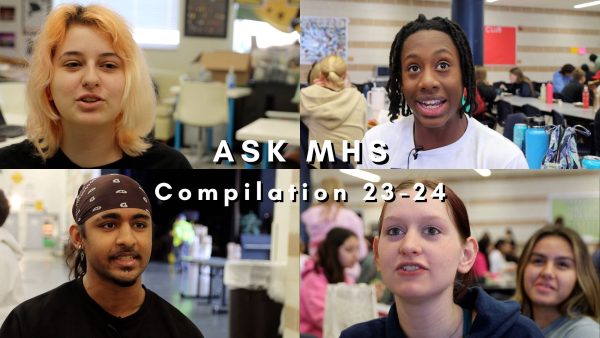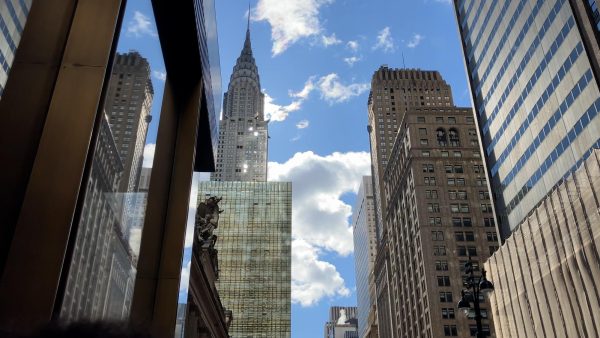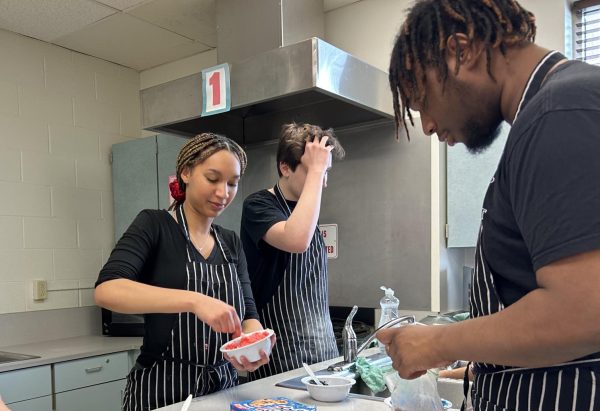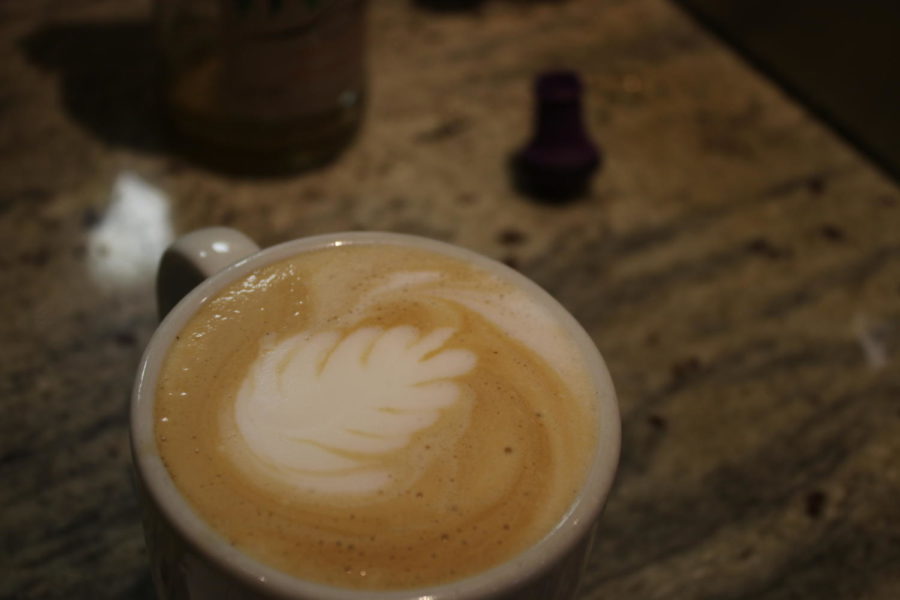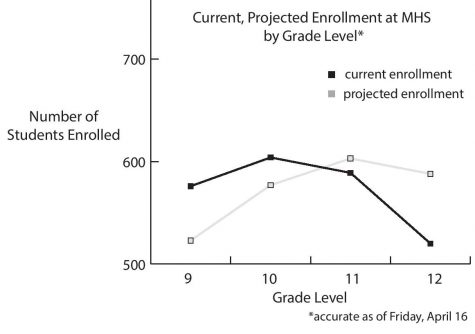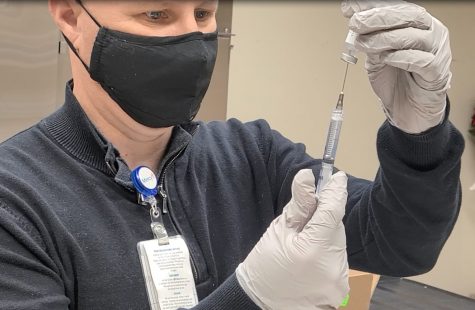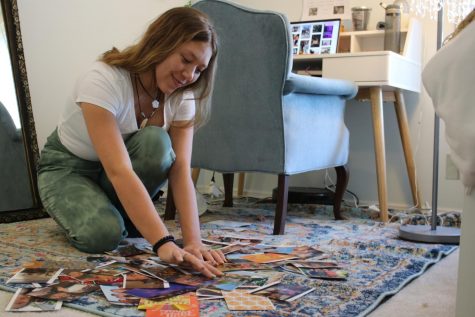Baristas Work Towards a Busy Fall Season
Media by Waha Siddiqui
his is the end result of the latte made by Hull, which is topped off with some latte art.
Paige Mathys, sophomore, starts her days off with a consistent pattern: a hot french vanilla drink with almond milk.
Mathys can drink coffee up to three times a day, usually from places such as Starbucks, Dunkin’ Donuts or The Wolf. During the fall, Mathys’ reliance on her daily dosage of caffeine increases.
“With how often I drink coffee, baristas have become my best friends. They give me what I need to push through the day,” Mathys said.
Coffee lovers like Mathys find autumn to be the primal time to exercise their love for coffee, investing in trying new flavors and drinking more coffee in general. According to the National Coffee Association’s 2018 report, the number of people drinking coffee within a typical day is 64 percent, the highest level since 2012. Young consumers are driving the trend of “coffee on the go.” With this increase in demand for coffee, the workload of a local barista increases tremendously.
Kylie Hull, senior, works at The Wolf, a local restaurant that receives an influx of customers demanding coffee in the fall season. Hull has been working at the Wolf since January, and has to cover both being a cashier and being a barista.
To Hull, the work of a barista is extremely difficult. Certain skills have to be perfected to please customers. Lattes and cappuccinos require different ways to both foam and steam milk, Hull said.
On top of that, latte art is really hard to learn and then apply. It is kind of like an art to see what patterns I can do and it’s definitely the best part of my job.
— Kylie Hull
“On top of that, latte art is really hard to learn and then apply. It is kind of like an art to see what patterns I can do and it’s definitely the best part of my job,” Hull said.
Hull works 8-hour weekend shifts, and makes about 35 coffees per shift. Hull works with other experienced baristas like Kyle Anderson, 21.
Anderson is a former manager of a Starbucks and now works as a barista at The Wolf. The shift from Starbucks to the Wolf was tremendously life-changing to Anderson.
I worked nights at a nearby Starbucks, sometimes making up to 500 coffees in one shift. There wasn’t any time to relax, everything was go, go, go.
— Kyle Anderson
“I worked nights at a nearby Starbucks, sometimes making up to 500 coffees in one shift. There wasn’t any time to relax, everything was go, go, go,” Anderson said.
However, the Wolf and Starbucks are not easily comparable.
“At Starbucks, making coffee is an automated and timed process, and at the Wolf, every coffee is made individually, thus taking more work,” Anderson said.
During the fall, Anderson noticed that customer patience remains moderate at the Wolf, which wasn’t the case at Starbucks; however, he still feels a pressure to meet expectations.
“So many people rely on coffee. They need to have it everyday and they need to have it a certain way,” Anderson said. “So for me, if you get it wrong, all of a sudden you’re the ‘bad person.’ Sometimes, people go crazy over it.”
Your donation will support the student journalists of Marquette High School. Your contribution will allow us to purchase equipment and cover our annual website hosting costs. You may become a PATRON by making a donation at one of these levels: White/$30, Green/$50, Blue/$100. Patron names will be published in the print newsmagazine, on the website and once per quarter on our social media accounts.

Waha Siddiqui, senior, is the Editor in Chief of the Messenger for the 2020-2021 school year. Beside her involvement in student journalism at Marquette,...




